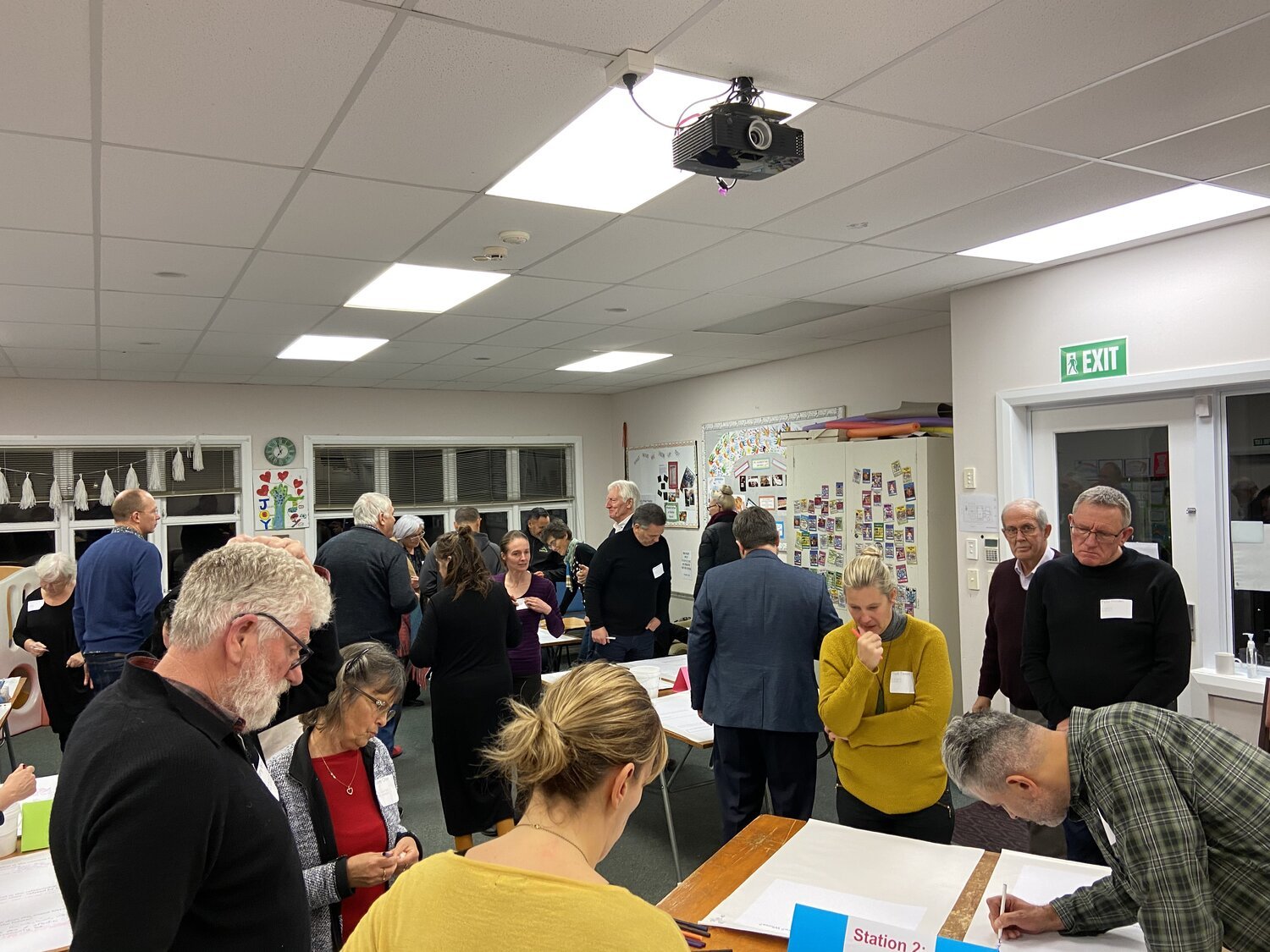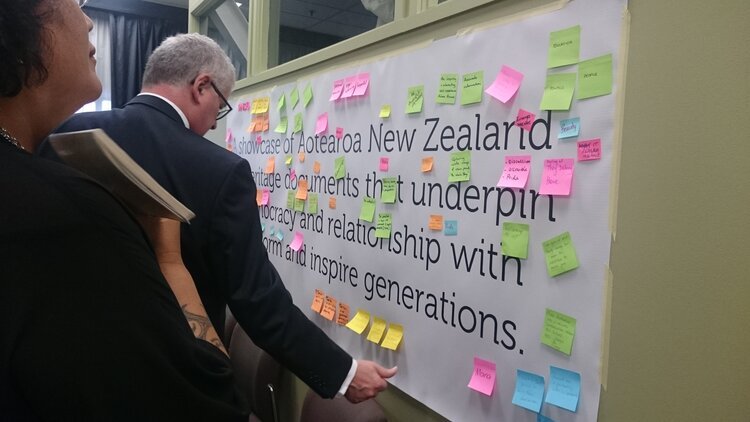The 4 c’s: connection, consultation, collaboration & co-creation
Making collaborations real
When people talk about new developments in the world of visitor experiences, you might expect to hear about the latest technology to wow visitors. But one of the biggest changes over the past 20 years has been less about what and more about how and why: the demand for meaningful collaboration with communities and stakeholders, to create experiences that are “for the people, by the people”. In Aotearoa New Zealand this trend has largely been driven by Māori, but it is happening around the world among First Nations people - and in other communities too.
Te Whare Hononga “Hui Nui”(Big Meeting) - Full Stakeholder Consultation Workshop
Community collaboration is a kind of continuum, from consultation through to co-creation (man there are a lot of Cs in that sentence). Genuine collaboration can deliver authentic storytelling that appeals to outside visitors because it resonates first and foremost with the community that owns the story. Genuine collaboration is, however, almost by definition, not easy. Here are five things we’ve learned:
1.“Bring us to the table at the start.”
Formulating a vision for the project during the initial stages of He Tohu
The message from communities is clear - they want the right people to be involved in the process as early as possible. Putting protocols in place with buy-in from community leaders reassures them that their knowledge will be treated respectfully and appropriately before they share it. A well-crafted, clearly-defined but flexible process is the foundation stone for any good working relationship.
Where members of the community are particularly being asked to contribute their time and knowledge, they need to be paid fairly as consultants.
2.Where possible, kanohi ki te kanohi (face-to-face)
Lockdown has opened everyone’s eyes to the power of video conferencing as a tool to work effectively remotely. But there is still a lot to be said about the power of face-to-face meetings early in the life of a project to build confidence and trust between collaborators. Incorporating at least one initial in-person meeting can be extremely valuable.
3.One size does not fit all
Every organisation, project and community is different. A one-size-fits-all approach won’t work. To a large extent, the process of collaboration has to be hand-made for each project. That sounds like a lot of work, but it pays dividends.
A hand-made process will involve setting up groups and creating mechanisms for consultation, co-creation or approval. It might also involve tactical decisions like tailoring workshops to suit the size of the group, the intended outcome and how participants will prefer to express their ideas: will they be introverts who like to write things down or storytellers who would prefer a ‘yarning circle’? Create an environment for productive, purposeful discussions by asking the right questions and then listen carefully to the answers throughout the course of the entire project.
Great stories can be found in all sorts of places – whether a friend-of-a-friend, the bus-stop, a close-knit community, grandparents, or social media. When working on a project, the best ideas come from working with communities and listening to the stories they want to tell. Wonderful and unexpected things can happen when you look around, and listen carefully to many voices.
4.Funnels
Once the processes have been agreed, it’s in everyone’s interests that the project progresses. One useful way of thinking about projects is in terms of one or a series of “funnels”. Start out wide, listen to as many voices as possible, incorporate different ideas, perspectives and approaches and build awareness and excitement about the project. Wider consultation like this can be done through “big meetings”, social media surveys or discussions with community organisations.
But it’s probable that not everyone has the time or specialist knowledge to contribute equally. We usually find it useful to convene a tighter “expert group” out of community or stakeholders to review design and content as it develops. It should be made up of a good spread of people (different ages, genders etc.) and include representatives from the community or communities who are empowered to speak on their behalf.
You may need to go wide again, double-diamond style, to reassure the wider community that you are still on track. But to avoid time blowouts (endless revisions) or creative dilution (“design by committee”) make sure that the process is well-structured and agreed.
5.Own Your Mistakes
Part of collaborating is also about embracing criticism, recognising when you've gone wrong, and then fixing that. This means that conversations with the community and the ability to course-correct if needed should be built-in across the life of the project.
Story Inc Content Developer, Kate Manson, participates in a Community Consultation session during the planning of Get Curious!




